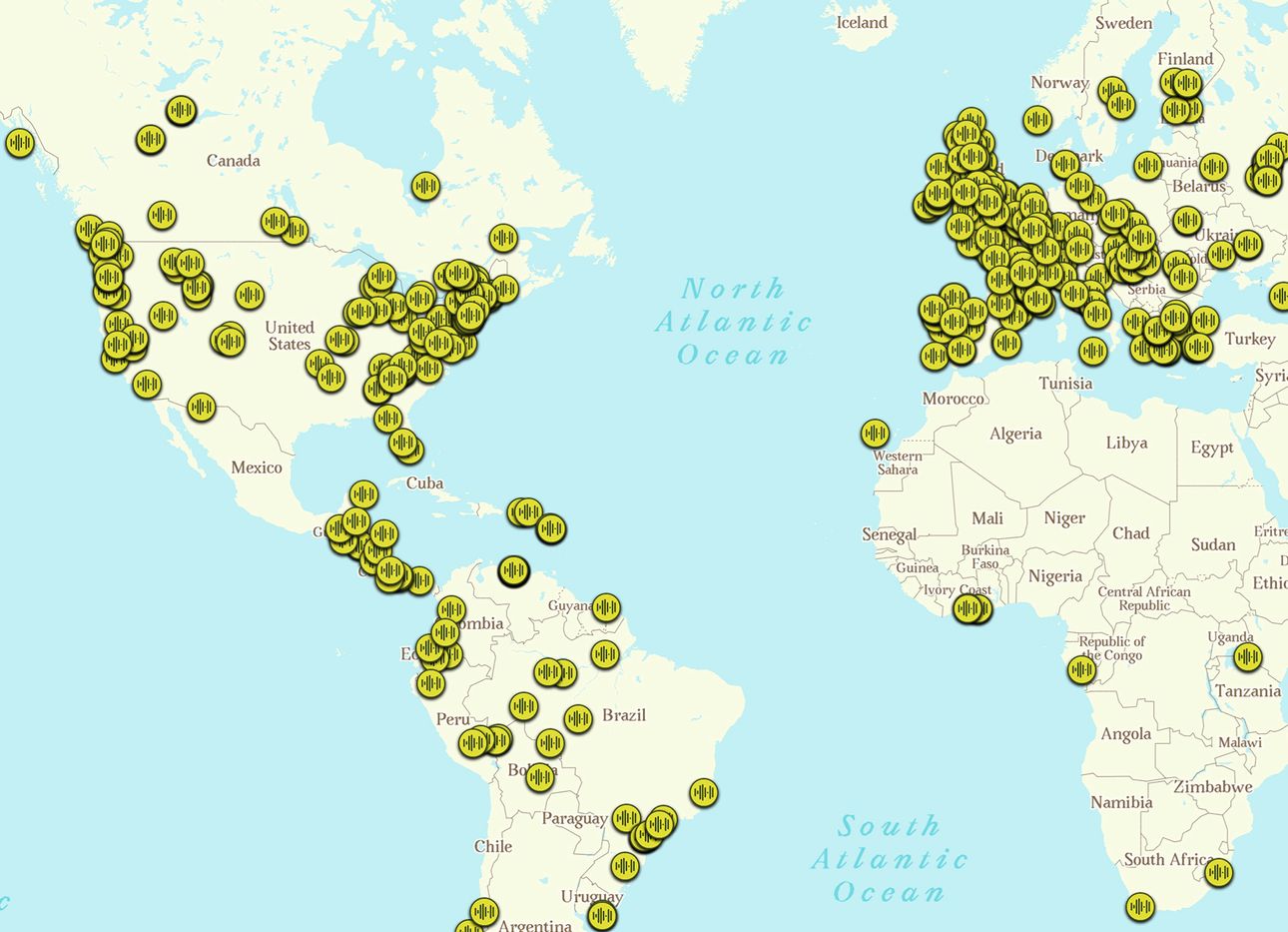
This Open-Source Library Captures the Magic of the Forest Through Sound
Spend a few hours with the Sounds of the Forest open-source library of woodland-area recordings, and you’ll be sure to see the forest for the trees. From the Alps to the Amazon to the Adirondacks, forests are perhaps our most important natural resource (as Dr. Suzanne Simard recently noted on Ep. 114 of our At a Distance podcast), and one of our most spiritually beloved. Be they tropical or temperate, these dense ecosystems function as the world’s lungs, sequestering carbon and providing habitats for millions of species. In recent years (thanks, in large part, to pioneering work by Dr. Simard), science has taught us that trees cluster together in forests to communicate with each other and even share resources. Yet forests are increasingly threatened by deforestation, not to mention fire, flooding, insects, and diseases, even as we’ve come to appreciate their psychological benefits (forest bathing, anyone?) all the more.
Maybe that’s why, since May 2020, roughly 550 people from more than 50 countries have now contributed short audio postcards to the Sounds of the Forest project. How about the Sinharaja rainforest in Sri Lanka? Maybe the Serra De Monchique in Portugal, or the Ankasa on the Ivory Coast? Funded by Arts Council England, the ongoing online effort was conceived as part of Timber, a three-day festival held earlier this month at Feanedock, a 70-acre woodland site near Leicestershire and part of the larger National Forest located in England’s Midlands region. The trees themselves don’t make much sound, but these recordings are rich in birdsong, and sometimes you can hear the rain, or even someone walking, breathing. The festival also commissioned and debuted new works by musicians Erland Cooper, Hinako Omori, and Jason Singh.
Sounds of the Forest isn’t the only place where you can commune aurally and arboreally these days. Maya Lin's eerie “Ghost Forest” installation in New York’s Madison Square Park (on view through November 14) reminds us that, while it’s important to celebrate and honor what’s alive on earth, we must also recognize and remember what’s been lost due to environmental degradation and the climate crisis. Featuring 49 dead Atlantic white cedar trees and recordings made at a New Jersey woodland that has died out due to saltwater inundation, the project serves as a must-see (and must-listen) meditation-memorial on missing nature. Thankfully, as Sounds of the Forest reminds us, many woodland wonders today remain around the world—a subtle nudge to continue to protect them.